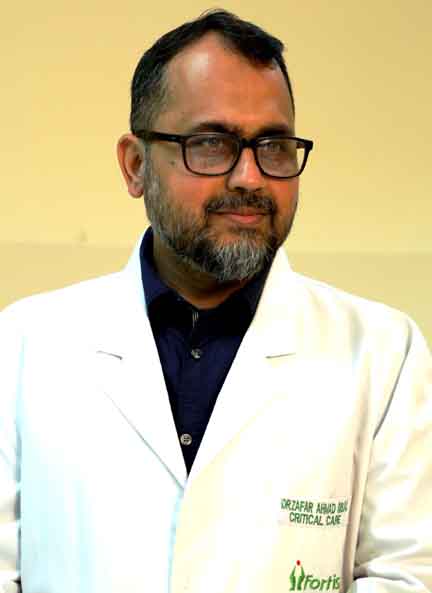Identifying asthma symptoms early during childhood can aid normal lung development, says Dr Zafar Iqbal
3 min read
Chandigarh, May 1, 2023: Asthma is a major non-communicable disease (NCD) and affects more than 34 million patients worldwide every year. Out of this, India accounts for over 13% of the global burden and 42% of asthma deaths globally, according to a study conducted by the Global Burden of Disease. Further, cases of asthma in children have also witnessed a sharp rise in recent years.
To raise awareness on respiratory disease, World Asthma Day is observed on the first Tuesday of May every year. The theme of this year’s event is “Asthma care for All”.
Dr Zafar Ahmad Iqbal, Director, Pulmonology, Critical Care and Sleep Studies, Fortis Hospital Mohali, in an advisory explains how to safeguard one’s health from asthma and its treatment options.
What is asthma?
Asthma is a chronic inflammatory condition in which there is narrowing of the airways due to inflammation and mucus production. It is the commonest cause of chronic disease in children and also affects adults. “Sometimes, asthma attacks can get serious and may require hospitalisation. Fortis Mohali regularly receives such patients during the harvesting months and during seasonal change. Unfortunately, childhood asthma cannot be cured, but if managed well, such attacks can be prevented. More than 50% children outgrow their asthma by the time they reach adolescence,” added Dr Zafar.
Symptoms in children
Children suffering from asthma exhibit frequent coughing, wheezing, breathlessness on exposure to seasonal change and infections. Dr Zafar further said, “The common childhood symptoms include a whistling or wheezing sound when breathing out. Some children also experience shortness of breath while playing or even during routine work along with chest congestion or tightness.”
When does it worsen?
Dr Zafar said asthma in children could worsen with frequent cough. “An asthma attack happens when a child has a viral infection during sleep, or is exposed to cold air, pollens, pets, perfumes, dust etc. This causes fatigue and may affect the child’s routine and performance.”
Diagnosis
Dr Zafar said childhood asthma should be identified, diagnosed and treated appropriately with bronchodilators under the supervision of an expert. “Parents must not heed to the myth that inhalers are a habit-forming practice. Due to this, the symptoms are not controlled early and hence, the child may require life-long treatment,” he added.
Treatment options
Bronchodilators and inhaled corticosteroids are given through the inhalation route as these have negligible side effects. Inhaler technique is also ensured for the appropriate drug delivery to the lungs. Stating that inhalers were a safe option, Dr Zafar, added, “Inhalers help prevent any systemic adverse effects. Introducing certain lifestyle changes such as maintaining low humidity at home, keeping indoor air clean, reducing pet danders (animals shedding tiny flakes from their skin), dust control and reducing cold air exposure can help prevent asthma attacks.”
Importance of diet & exercise
Discussing the importance of diet for asthma patients, Dr Zafar, said, “Addition of certain foods rich in Vitamin D is important. These include milk, eggs, beta carotene-rich vegetables such as carrots and leafy greens, and magnesium-rich foods like spinach and pumpkin seeds. Regular exercise such as yoga also helps maintain good health. A child should be symptom-free to have normal lungs in adult life. Parents also play a major role in managing asthma-related conditions in children. Steps need to be taken early to keep the disease at bay,” added Dr Zafar.




